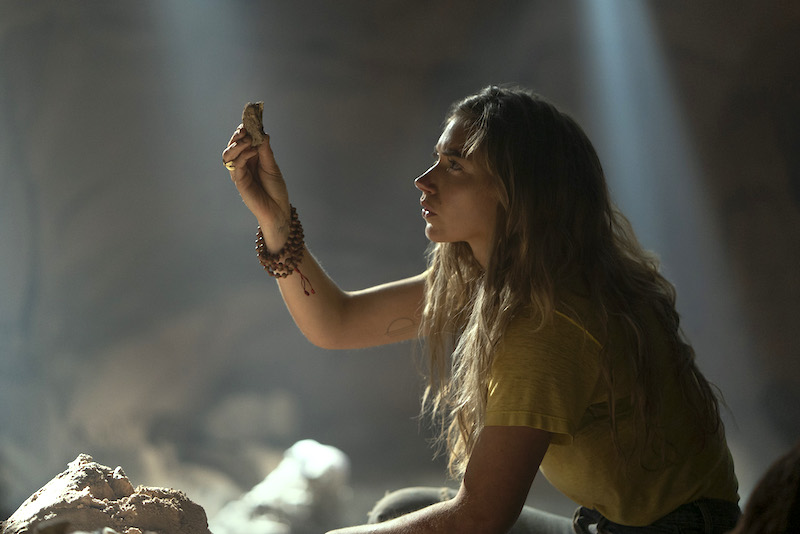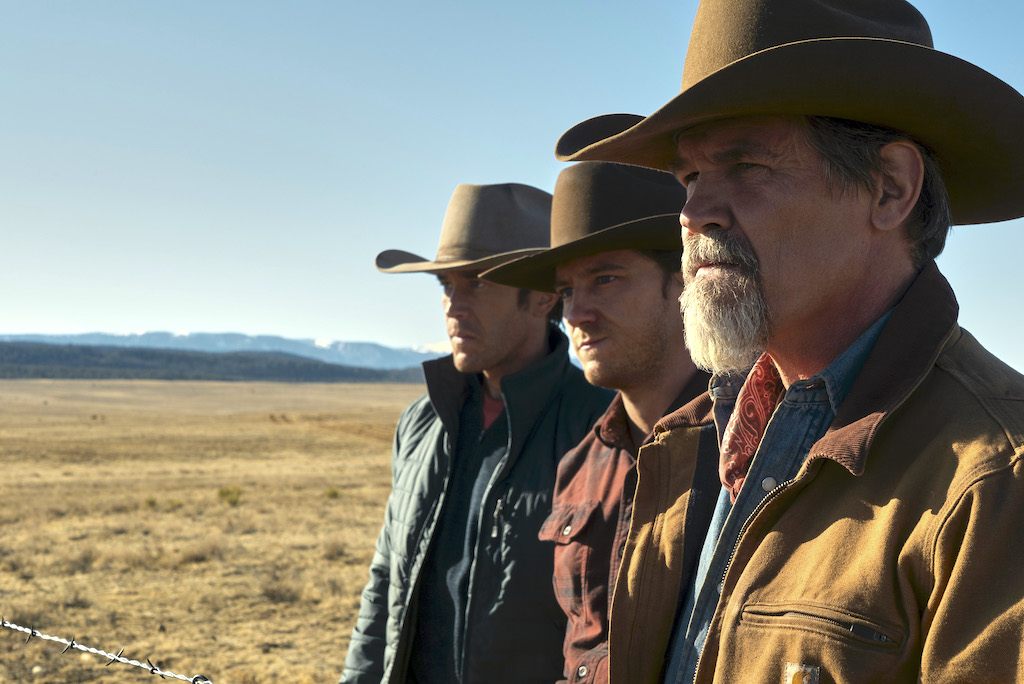The allure of Westerns has long made itself felt on on our screens big and small. It deals with a vastness and the expanse of the unknown. Outer Range is a welcome addition combining elements of mystery, thriller and supernatural.
“For me, the idea for Outer Range came from an investigation of my own home where I grew up in the West,” said the show’s creator Brian Watkins. “The West for me has always been equal parts wonders and danger. A place where the land shapes individuals. The earth beneath your feet is an influential force.”
The popularized mythology and fables arising from the West “to me feel undeniably and immediately emotional,” he continued. Outer Range is set on a troubled ranch in Wyoming. Although Watkins was born in Colorado, the story came to him organically. The writer described his show as a neo-western that takes on the strangeness of the west as well as the classical tropes of the genre.
Royal Abbott (the patriarch played by Josh Brolin) stumbles upon a metaphysical void on his property and “ends up revealing the voids within him and his family by setting a catastrophic chain of events in motion.”
The Western genre relies on a tug of war between fighting and feeling the land. It’s an exploration of possibility, fear, and potential. “There’s a spirit in the West that one frontier begats another. It is the land of dreams and opportunity for a reason. These opportunities may live deep within the earth like gold or oil or in the cultural imagination in places like Hollywood,” Watkins said.
Go West Young Man And Grow Up With The Country
Brian Watkins expressed his gratitude to writers like Sam Shepherd (True West), Cormac McCarthy (No Country For Old Men) which were major influencers on Outer Range. Watkins doesn’t restrict his influences to literary artists. He also tips his hat to visual artists like Bruce Nauman “who reach the stranger outer edges of the West and explore the ‘David Lynch-ean’ side of things.”

Brian Watkins. Photo by Gregory Costanzo
The ethereal nature of Brian’s western fable needs some tangible molding into traditional story structures. “The story is scaffolded to a classic crime thriller narrative structure. We traffick in a spectrum that ranges from wry humor, to a mystery thriller, to an operatic tragedy,” he pondered. “Sometimes, it’s all of those things at once. With any luck, Outer range is a drama that makes you smile and induces a sense of wonder as you explore this experience of the unknown.”
Watkins postured that wallowing in the unknown and the inexplicable, life can become absurd. “The only choice we have with our grief and doubt is to laugh at it.”
Brian Watkins decided on the opening scene of Royal Abbott staring at a buffalo before the season was even outlined. “The American buffalo is a prehistoric, massively strong and iconic animal with a rich history. It deserves, not just our reverence, but means something much different to the indigenous communities of Wyoming than it did to the white settlers.”
The buffalo subsequently infuses the story with many questions, narratives, conflicts, and fables. “It has defined our notions of the American past and the American present.”
Watkins mapped the image of the buffalo onto Cronos, the Greek god of the time and leader of the Titans. It was an intuitive creative choices. “It was a tear in the earth, a tear in the fabric of what we know.” Cronos is also recited by Autumn, (the enigmatic travelling poet played by Imogen Poots) who “searches for meaning in the land, searches for her identity in both herself and the land.”
Outer Range plays with its audience with its rich thematics which include emotions, spirituality, religion, and symbolism. “There’s a lot of symbology in the show ranging from the wall of owls (a symbol of remaining stoic in the face of darkness) in the Tillerson house, the signage in Cecilia Abbott’s (Lili Taylor) office that reads, ‘Oh, Lord reveal yourself to us.'” The show’s creator even cites the “Cold Beer” sign in the bar as an icon of the West. “There are mini-sermons all over the place.” These ostensible symbols interact with the mystery of the landscape.
Uphold the wonder was our mantra for the show
This mantra was an entree inviting the audience to look deeper into the story. “What happens when a disenchanted world stumbles upon enchantment?”
Watkins also quotes a billboard later in the season which reads, “America tells you that the only things worth knowing are those that can be known. America is wrong!”

Autumn (Imogen Poots) Photo by Richard Foreman/ Prime Video
Watkins’ fascination with the West also extends to the people. “The West is a place that is traditionally conservatively religious while being politically liberal. It’s a blend of left and right.” This illuminates the dual spirituality and faith of the place. “It also explores the crisis of faith.”
Outer Range walks the tightrope of the dream-like sparseness of the West and the tightly-plaid mystery of Royal’s missing sister-in-law along with numerous other storylines like losing their land to the Tillersons. We asked Brian how he simultaneously created space for the audience to wonder against adding too many plot lines to the story. He sees them as part of the same story. “The emotional mystery of the missing family member is paralleled with the metaphysical mystery of the supernatural void. The pain the Abbotts are experiencing is echoed in that hole. The sci-fi supernatural elements don’t mean anything unless they make us feel something deeply.”
In order to anchor Outer Range to the “inner range,” the creator turned to Steven Spielberg for artistic inspiration; specifically Close Encounters Of The Third Kind. “There’s a family drama at the heart of this story.”
The character of Autumn who arrives at the Abbott ranch seeking a place to camp and clear her mind feeds into the overall mood of the show. “She’s a woman of the West who’s as interested in mystical things as she is in taking risks by being a coyote figure that you can’t figure out. She consistently caught you off guard. She has a deep sense of cunning and intelligence. She can hold three thoughts in her head at the same time,” said Watkins.
The writers’ room meticulously layered each story line. Having so many narrative balls in the air was managed via a story cascade which led to a cliffhanger at the end of each episode. “We could tell the Abbott family story that would dove-tail into the rival Tillerson family story that would dovetail into the metaphysical world,” Watkins explained. He described each entity as both an intersectional Venn diagram and a series of dominos. It’s a messy and spontaneous writing process that keeps the characters alive. “If every character is trying to fill the inner void within them you can cook five different stories at once.” Royal Abbot is the nucleus of the story and the other characters are his satellites. This helped keep the narrative backbone of the story defined, while allowing the mystical elements to rise.
What makes a good writer? “One where you can feel they have skin in the game. You can see their blood on the page,” Watkins concluded.
